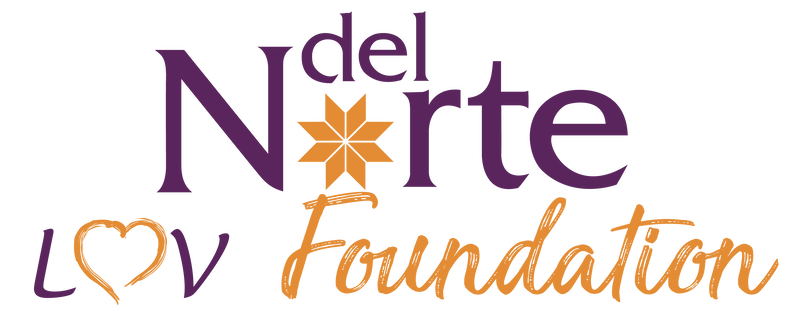Soil Yard Hours Mon-Fri: 8:00am-5:00pm Sat: 9:00am-1:00pm |
Frequently Asked Questions
Do I need an appointment to pick up?
Not at all. Come visit us at the soil yard any time during our business hours and we are happy to help.
Do I load my own material or do you have a way to load a truck?
We have a small front end loader to load ½ yard or more into the bed of a truck. If you don’t have a truck, we have bagged products available, and you are welcome to bring your own 5 gallon bucket or container and fill them yourself - we have shovels available! For small bulk quantities like buckets, most material is $1 per gallon, and premium materials are $2 a gallon.
How much is 1 cubic yard?
1 cubic yard will fill a box 3 feet long x 3 feet wide x 3 feet deep, and has 202 gallons. A midsize pickup truck can carry 1 cubic yard on average. Material weight is a bigger factor in how much you can haul. If you have questions, just ask the operator loading you, we have plenty of experience to draw from.
Can I get less than a cubic yard?
Yes, we sell material by the ½ cubic yard. Smaller quantities are best measured out with a container.
Do you deliver?
We work with haulers to make your soil purchase and delivery as easy as possible, but during busy times we ask for 2 weeks advance notice if you need a particular day and time to receive your order. You don’t have to be home to accept delivery, but please clearly mark where you would like the material to be dropped. Click here to see our Delivery Map!
Will you spread the material in our yard?
Unfortunately, this is not a service we offer. We do work with plenty of landscapers and will gladly offer recommendations if you need them.
Not at all. Come visit us at the soil yard any time during our business hours and we are happy to help.
Do I load my own material or do you have a way to load a truck?
We have a small front end loader to load ½ yard or more into the bed of a truck. If you don’t have a truck, we have bagged products available, and you are welcome to bring your own 5 gallon bucket or container and fill them yourself - we have shovels available! For small bulk quantities like buckets, most material is $1 per gallon, and premium materials are $2 a gallon.
How much is 1 cubic yard?
1 cubic yard will fill a box 3 feet long x 3 feet wide x 3 feet deep, and has 202 gallons. A midsize pickup truck can carry 1 cubic yard on average. Material weight is a bigger factor in how much you can haul. If you have questions, just ask the operator loading you, we have plenty of experience to draw from.
Can I get less than a cubic yard?
Yes, we sell material by the ½ cubic yard. Smaller quantities are best measured out with a container.
Do you deliver?
We work with haulers to make your soil purchase and delivery as easy as possible, but during busy times we ask for 2 weeks advance notice if you need a particular day and time to receive your order. You don’t have to be home to accept delivery, but please clearly mark where you would like the material to be dropped. Click here to see our Delivery Map!
Will you spread the material in our yard?
Unfortunately, this is not a service we offer. We do work with plenty of landscapers and will gladly offer recommendations if you need them.
Fixing Soil
Soil Organic Matter (compost) is the key to transform your dirt into soil. In most parts of New Mexico, you will need to add 50-75% compost by volume into the native soil to get to the magical 5% organic matter. If you have an established soil, 1-2 inches of organic matter added yearly should sustain your garden.
What do I do if my soil is...
Sandy? Apply 4-6” of one of Reunity Resources composts then turn or till in at an 8 inch depth. Water thoroughly and keep the area damp for 2-4 weeks to allow the sand and organic matter to combine.
Clay? Apply 4-6” of one of Reunity Resources composts then turn or till in at an 8 inch depth. Water lightly until the soil is damp to the second knuckle on your finger and keep the area damp for 2-4 weeks to allow the clay and soil matter to combine. If there is a large caliche or calcium carbonate content, adding pumice and gypsum will help develop better soil porosity.
Rock Hard? This is a tough one... but common in New Mexico where large deposits of calcium carbonate (free lime) naturally occur. A large amount of organic matter, humic acid, gypsum, and large (½” +) sized porous mineral like pumice, combined with a lot of water will begin the process. If remediating the soil for the future, start growing annual grasses, sunflowers, and daikon radish which will all have strong roots to break up compacted soils.
Clay? Apply 4-6” of one of Reunity Resources composts then turn or till in at an 8 inch depth. Water lightly until the soil is damp to the second knuckle on your finger and keep the area damp for 2-4 weeks to allow the clay and soil matter to combine. If there is a large caliche or calcium carbonate content, adding pumice and gypsum will help develop better soil porosity.
Rock Hard? This is a tough one... but common in New Mexico where large deposits of calcium carbonate (free lime) naturally occur. A large amount of organic matter, humic acid, gypsum, and large (½” +) sized porous mineral like pumice, combined with a lot of water will begin the process. If remediating the soil for the future, start growing annual grasses, sunflowers, and daikon radish which will all have strong roots to break up compacted soils.
Soil Health Tips:
Add Organic Matter: Whether you compost in your backyard, buy compost, or bury your food scraps in the garden, adding organic matter to your soil will increase the microbiological life and diversity, create a water absorbent soil, act as a biofilter to prevent nutrient runoff, and provide a sustainable source of nutrients to your garden.
Mulch: Adding mulch to your garden will protect the loamy surface where an abundance of microorganisms thrive. A dry soil is a dead soil, so protecting the soil surface will prevent evaporative loss and keep the nutrient factory thriving.
Polycrop/Intercrop: Grow flowers and herbs with the tomatoes and potatoes. Utilize native species next to the rhododendrons. Diversity is the spice of life as they say (who's they? No idea, but nature tells us it's true). Diversifying the plant species in your garden will diversify the biological life in your soil and help maintain a balance of nutrients to meet the diverse needs of the plants. As an added bonus, you'll get visited by a diverse array of beneficial insects.
Intercrop by Height and Shade Needs: That lasagna garden you spent so much time planning thrives with the right planting strategy. Tomatoes grow tall to collect sun, which provides shade for the tender basil, which grows to an intermediate height and deters pests that come for the squash, which in turn is providing a natural shade for the soil.
Feed the Soil, Not the Plant: Use organic fertilizers like fish emulsion, gypsum, and rock dusts rather than chemical fertilizers. Plan ahead, they take longer to have the desired effect. These natural fertilizers feed the microorganisms, who process them naturally into plant available nutrients. Chemical fertilizers have been shown to kill biological life.
Water Wisely: Most gardeners over water, which fills up the pores in soil and can suffocate beneficial bacteria and lead to increased pathogens. Soil should be what we call ‘field wet’, meaning that when you squeeze a handful of damp soil water doesn’t drip out. Watering in New Mexico is a unique challenge with our different soil types, but best practice is to water with less volume and more regularly. A moisture meter is a cheap and effective way to track and manage soil moisture. Keeping your moisture meter in the ‘medium’ or ‘moist’ range is ideal. Watering schedules will change with seasonal temperature changes.
Inoculate: Add bacteria and fungi to balance the soil. Utilize current science to balance your soil. There are countless products utilizing bacteria and fungi. A little research and expense into the right micro-organisms can make all the difference.
Play and Have Fun: Whether you’re a farmer or growing your first tomato plant, always remember we grow plants because we enjoy it. Make mistakes, but learn from them.
Mulch: Adding mulch to your garden will protect the loamy surface where an abundance of microorganisms thrive. A dry soil is a dead soil, so protecting the soil surface will prevent evaporative loss and keep the nutrient factory thriving.
Polycrop/Intercrop: Grow flowers and herbs with the tomatoes and potatoes. Utilize native species next to the rhododendrons. Diversity is the spice of life as they say (who's they? No idea, but nature tells us it's true). Diversifying the plant species in your garden will diversify the biological life in your soil and help maintain a balance of nutrients to meet the diverse needs of the plants. As an added bonus, you'll get visited by a diverse array of beneficial insects.
Intercrop by Height and Shade Needs: That lasagna garden you spent so much time planning thrives with the right planting strategy. Tomatoes grow tall to collect sun, which provides shade for the tender basil, which grows to an intermediate height and deters pests that come for the squash, which in turn is providing a natural shade for the soil.
Feed the Soil, Not the Plant: Use organic fertilizers like fish emulsion, gypsum, and rock dusts rather than chemical fertilizers. Plan ahead, they take longer to have the desired effect. These natural fertilizers feed the microorganisms, who process them naturally into plant available nutrients. Chemical fertilizers have been shown to kill biological life.
Water Wisely: Most gardeners over water, which fills up the pores in soil and can suffocate beneficial bacteria and lead to increased pathogens. Soil should be what we call ‘field wet’, meaning that when you squeeze a handful of damp soil water doesn’t drip out. Watering in New Mexico is a unique challenge with our different soil types, but best practice is to water with less volume and more regularly. A moisture meter is a cheap and effective way to track and manage soil moisture. Keeping your moisture meter in the ‘medium’ or ‘moist’ range is ideal. Watering schedules will change with seasonal temperature changes.
Inoculate: Add bacteria and fungi to balance the soil. Utilize current science to balance your soil. There are countless products utilizing bacteria and fungi. A little research and expense into the right micro-organisms can make all the difference.
Play and Have Fun: Whether you’re a farmer or growing your first tomato plant, always remember we grow plants because we enjoy it. Make mistakes, but learn from them.


















